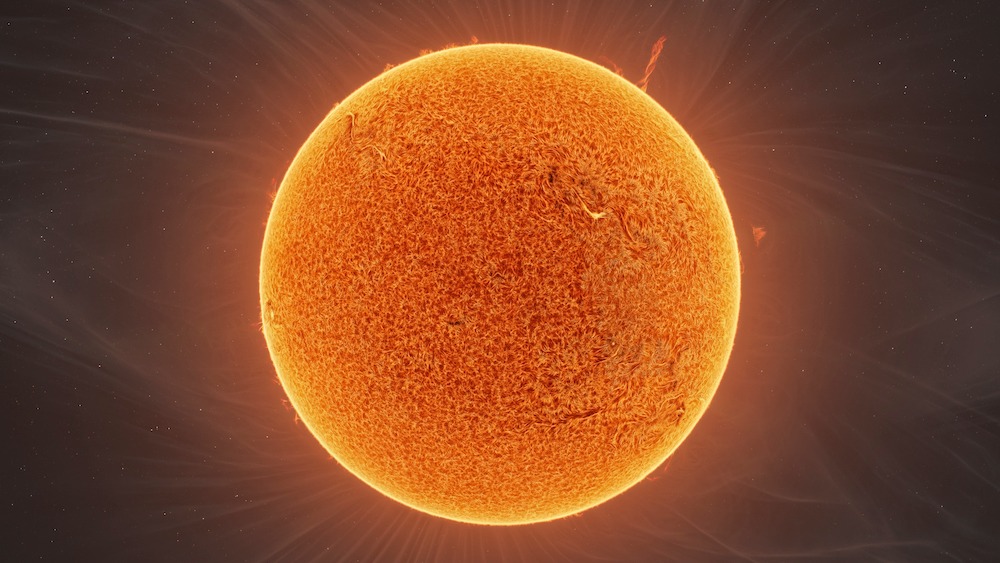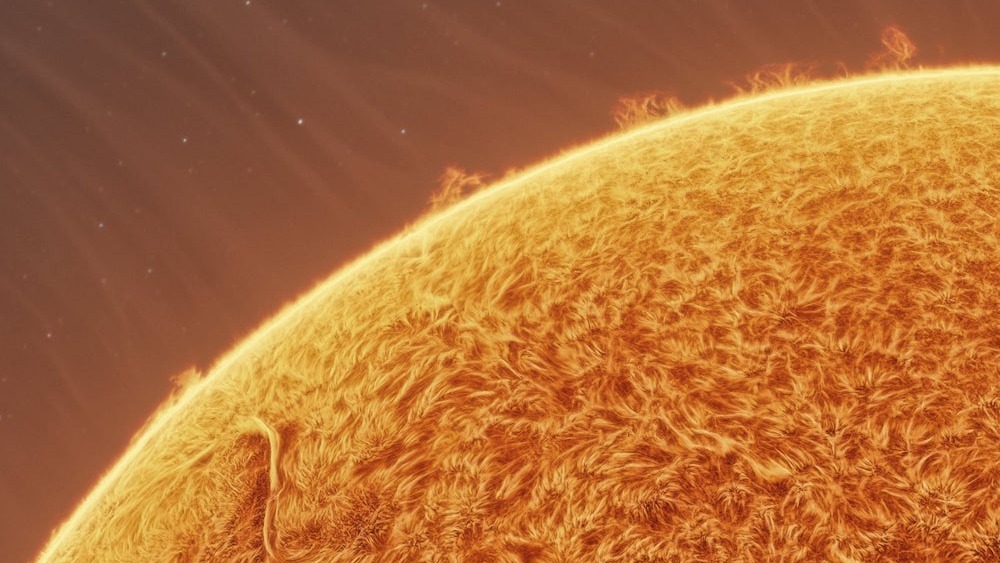Sun's fiery surface revealed in amazing composite of 90,000 images
Astrophotographers have created an incredible image of the sun by piecing together thousands of photographs.

The fiery surface of the sun is the star of an incredible new photograph created by a pair of astrophotographers.
To make the image, Andrew McCarthy and Jason Guenzel used their own photographs, including one snapped by Guenzel during the 2017 total solar eclipse, as well as data from the Solar and Heliospheric Observatory, a spacecraft that NASA launched in 1995 in collaboration with the European Space Agency, the latter they used as reference points.
The pair stitched together approximately 90,000 photographs of the sun to make the image they're calling "Fusion of Helios," which showcases the star's swirling surface and looks similar to the fuzz cloaking a tennis ball.
Related: Puzzle of the sun's mysterious 'heartbeat' signals finally solved
"We wanted to push astrophotography as far as it would go in terms of both the science and art of it by creating a hyper-accurate image of our star in a way that breaks conventional rules of astrophotography," McCarthy told Live Science. "We wanted to create a full mosaic of the sun."
One challenge was getting images of both the corona, the outermost part of the sun's atmosphere, and the chromosphere, a thin layer of plasma that sits between the corona and the sun's visible surface (the photosphere). These portions of the sun are visible only under certain conditions.

"We're using multiple layers of the sun's atmosphere that normally can't be photographed at the same time," McCarthy said. "The reason … is because of the relative brightness of the sun. The corona is only really visible if the sun is completely blocked out, like during an eclipse."
Get the world’s most fascinating discoveries delivered straight to your inbox.
With the help of computer software, the photographers "stitched the photos together like a quilt" to make the final image, McCarthy wrote in a March 22 Instagram post announcing the final image. The mosaic includes thousands of spicules — wispy-looking jets of plasma — as well as a massive tornado of plasma that stood roughly 14 Earths tall, according to McCarthy.
Print copies of "Fusion of Helios" are available for purchase on McCarthy's and Guenzel's websites.
Jennifer Nalewicki is former Live Science staff writer and Salt Lake City-based journalist whose work has been featured in The New York Times, Smithsonian Magazine, Scientific American, Popular Mechanics and more. She covers several science topics from planet Earth to paleontology and archaeology to health and culture. Prior to freelancing, Jennifer held an Editor role at Time Inc. Jennifer has a bachelor's degree in Journalism from The University of Texas at Austin.


